The Kingdom of Mysore derived its name from the word “mahishur” or “mahishashurana Ooru”. Ooru, in the local dialect meant place or city and Mahishasura was the name of the demon king who lived there. Don’t let the fact that Mysore is named after a demon king, fool you though. The city is a beautiful place with immense cultural and historical significance. According to Puranic records of stories in the Devi Purana, Mysore was the city ruled by King Mahishasura, a buffalo-headed demon. Once the demon king started terrorizing the city’s inhabitants, the citizens along with gods and goddesses prayed to Goddess Parvati to save them from the demon king. The Goddess took the form of Chamundeshwari and battled with the demon king, finally killing him atop a nearby hill. Since then, the hill has been called Chamundi hill and the city, Mysore.
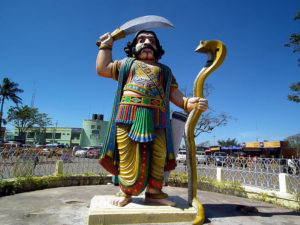
Dussehra in Mysore
Atop the hill itself, Chamundeshwari has been worshipped for centuries and is home to several inscriptions that glorify the history of Mysore. Mysore is very famous for the 10 day Dussehra festival it celebrates. This festival is dedicated to Chamundeshwari. Historically, Mysore was under the rule of the Gangas, a vast empire that covered most of present day Karnataka. The gangas started their rule in the 2nd century and expanded till the peak of their power in the 10th century. They decided to make Talakad as their capital city in the 3rd century because it was on the banks of the river Cauvery.
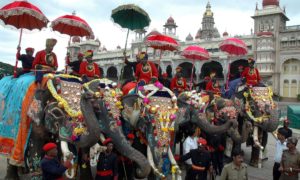
The rulers of Mysore
Mysore has a varied cultural and historical significance which is clear from the inscriptions found on the Chamundi Hills. These inscriptions are the oldest in Mysore and they date back to 950 A.D. which was around the time of the peak of the Ganga Empire. After the Gangas Empire fell, the Cholas took over and they ruled the Mysore Empire for a century. The Cholas however could not fend off attacks against the Hoysalas who drove away the Cholas around the 12th century. The Hoysalas then took control of Mysore and built several temples in and around Mysore. Most of the temples found in the Chamundi Hills and in Mysore is credited to the Hoysalas who were excellent builders. These temples date back to the 11th and 12th century and are at least 1000 years old now which shows the level of architectural finesse the Hoysalas had.
In 1399 A.D. Mysore was announced as the capital of the Mysore Yadu dynasty for the first time. This came as part of the Vijayanagara Empire after the defeat of the Hoysalas. The Vijayanagara Empire was a huge empire who had a vast reach and immense power. They also contributed a lot towards the temple building in Mysore. However, as history shows us, all Empires decline eventually and the Vijayanagara Empire did too. The Kingdom of Mysore became independent after the decline of the Vijayanagara Empire in 1565 A.D. This however did not stop other members of the Wodeyar family in taking over Mysore and building it as an independent kingdom.
In the 17th Century, the Kingdom of Mysore, under Narasaraja Wodeyar I and Chikka Devaraja Wodeyar expanded quickly and soon encompassed large parts of present day Karnataka and parts of Tamil Nadu. This made the Kingdom of Mysore quite a formidable presence in the South.
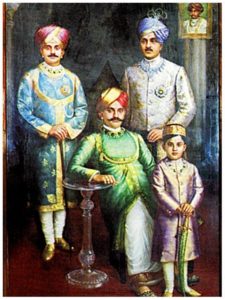
The advent of Haider Ali and Tipu Sultan
This, however changed with Haider Ali and his son Tipu Sultan. The Kingdom was at the peak of it military prowess under Haider and Tipu Sultan and they went to war with the Marathas, the British and the Kingdom of Travancore. All this culminated in four notable Anglo-Mysore war out of which the Kingdom of Mysore lost the 3rd and 4th. After the defeat, the British annexed various parts of Mysore for their own and restored the remaining to the Wodeyars by way of an alliance that remained in place until the Independence.
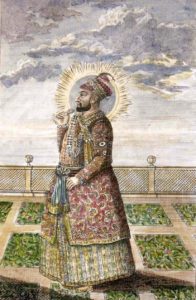
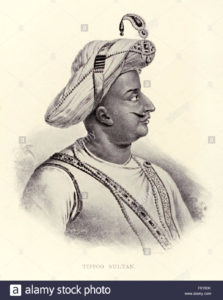 Haider Ali and Tipu Sultan
Haider Ali and Tipu SultanOwing to this variety of rulers of the same Kingdom, Mysore has a renowned cultural significance and is home to many inscriptions and temples which date back hundreds of years. The Wodeyars have a lot to contribute to the culture significance of Mysore as their rule stretched for many years. In terms of religion, the Wodeyars were often a mixed bag of VeeraShaivaites and Vishnuvaites. This did not matter when it came to the celebration of Dussera however as all the kings took part in the tradition put forth by Raja Wodeyar I. Since then, it has been a long held tradition of the Vijayanagara Royal Family.
The Royal Family also had a soft spot for the local Jains who practiced their religion and it has also been documented that some Wodeyars presided over important Jain puja’s and even offered Jain prayers themselves.
Mysore known for its progressive reforms
In terms of societal structure, the Kingdom was very progressive and took several steps to ensure the safety and well being of its citizens. Since it was a mostly Hindu state, there were practices of Sati and child marriage that were common in the Kingdom. After education reforms by the British, awareness about abolishing these practices swept the whole of India and influenced the Mysore Empire as well. The Kingdom of Mysore abolished the marriage of girls below the age of 8 in the year 1894. This may not seem as progress now but in the early ages, this was a huge step for the Kingdom of Mysore.
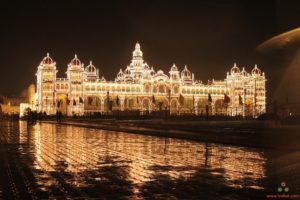
This city with such a cultural heritage is now officially known as Mysuru since 2014. With its palaces, temples and beautiful gardens, it is a much sought after tourist spot as well. Swachh Bharat Abhiyan has announced it as the cleanest city in India. So in modern times too, this place retains its glory.

Leave a Reply